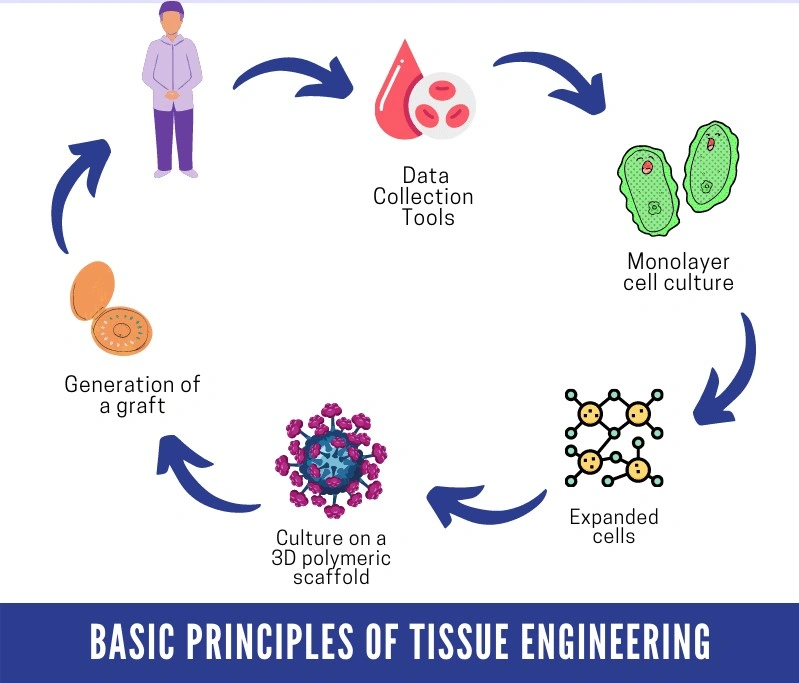Structure for Tissue Engineering Research while Writing a Detailed Research Proposal
Brief Highlights
- Writing a research proposal is the foremost task towards accomplishing the completion of a research project.
- Though the format of research proposals for different domains is similar but there is a huge variation in the content and its style
- Considering writing a research proposal for tissue engineering or medical domain it is imperative to mention the key constructs such as benefits, advancements etc.
Introduction
As defined earlier a research proposal holds paramount significance for successful completion of a research project. However, it is not merely a proposal but also a source of funding. In this case it is necessary that the proposal follows certain word length, a well-defined structure and layout. A general layout for a research proposal is as follows:
- Title
- Introduction
- Aims and objectives
- Literature review
While the aforementioned format is suitable for most of the research works of different domains it is also adjustable for medical domain but there have to be included certain content that justifies the work. For example, if the research project is related to advancement in surgery techniques then it becomes inevitable to describe in brief the difference between classical techniques and contemporary approaches. In addition it also noteworthy that the individual should have a clear vision of the approach being implemented or discussed in his project so as to avoid any confusion. Since here the plan for a research proposal for tissue engineering domain is being discussed hence a snippet of the key constructs required for writing a proposal are discussed.
While writing a research proposal for tissue engineering an individual should begin with describing the role of tissue engineering, its significance and its superiority over classical techniques that are being followed. An individual can begin with description of tissue engineering. For example, tissue engineering can be defined as a process in which a biological alternative is focused on for conserving the structure and function of tissue. The field of tissue engineering can be called as interdisciplinary since it integrates both engineering as well as life sciences. In the initial stage the tissue engineering practice was adopted near 1980 when skin regeneration was enabled by using the cells in collagen gels. With the passage of time and advancements in research the tissue engineering approach developed. The author explored the application of tissue engineering for regenerating the mandible and showed optimal results. In some prominent works the researchers have given a brief idea of the different components of tissue engineering and their significance.
It has been asserted through different works that tissue engineering refers to creating tissues by integrating scaffolds, cells or bioactive molecules.
In the introduction part of the research proposal some key points should be mandatorily included. For example in case of tissue engineering it should be mentioned that the tem was put forward to the scientific community by Langer and Vacanti. Similarly the key works performed towards the proposed research work should be mentioned and also the drawbacks of the approaches followed in those works should be discussed clearly.
Finally presenting a brief evaluation of the different research works, the proposed approach should be mentioned. It should clearly define its efficacy over other approaches performed. In the further sections of the research proposal a snippet of the technique being implemented should be provided so that the reviewer can understand the purpose of research and its significance towards the society. In addition it will also help reviewer to gain confidence about the funding of project. As mentioned previously there are some key questions that need to be addressed while writing a research proposal for tissue engineering. A snippet of these is given as follows.
<
Need of Tissue Engineering
Tissue engineering (TE) has revolutionised the field of medicine with its high efficacy and aid towards repairing and developing tissues that have been damaged due to any accident or illness. In the present scenario transplantation, use of mechanical devices is being widely employed which undeniably cause certain issues. TE aims to alleviate these issues and ensure smooth functioning. Though these approaches have been a boon for numerous individuals but they have been imposing certain problems such as lack of suitable donor during transplantation, higher risk of organ failure during transplantation etc. Similarly, issues associated with surgeries have also been found to be impacting health of individuals. Thus TE serves as a promising solution towards resolving these problems.
Success of Tissue Engineering
Since TE is a multidisciplinary approach involving engineering as well as biological techniques towards betterment of society. The skin TE approach is being practiced since long and has been exhibiting success. Considering the success it is now being explored to a greater extent by the practitioners with the motive of benefitting the society.
The damage of tissues is a common problem but the regeneration of these tissues is possible only up to a certain age. Beyond this age the regeneration process either slows down or stops completely causing severe pains and other allied issues. It is then that TE can be applied.
Process of Tissue Engineering
The process of TE can be explained through the graphical illustration shown below. It can be observed from the illustration that initially the cells are separated from a source followed by expansion in a cell culture system. They are then embedded onto a carrier which in addition to a proper medium imparts structural support. In this phase the cells move to the carrier and substitute the old tissues with the new tissues forming.
Besides these points it is necessary to mention the sample size and technique being used followed by conclusion. A research proposal planned and designed in such a way would ensure success in unison with timely completion of the project.

Summary
Writing a research proposal for tissue engineering is a critical task as it involves sharing different aspects related to the research that is being planned by an individual. However, a proper planning and design of the research can assure success. Also it is imperative that while preparing a research proposal one should include all the key points that would be helpful for the reviewer to understand the research. The researcher should also provide a conclusion which discusses the future scope of the approach applied in addition to its benefits and application in present situation.
References:
- Hernandez F,Ruiz-Magnaz V,Guijarro-Martinez R. Mandible reconstruction with tissue engineering in Multiple Recurrent Ameloblastom Int J Periodontics and Restorative Dent 2012
- Waranke PH ,Springer IN, Wiltfang J et. Al. Growth and transplantation of a custom vascularized bone graft in man The Lancet,2004;364:766-770
- Ghosh, Bikramaditya & Pal, Imon. (2016). Basic Ideas and Concepts about Tissue engineering: A Review. International Journal of Scientific and Engineering Research. 7.
- Castells-Sala C, Alemany-Ribes M, Fernandez-Muiños T, RechaSancho L, Lopez-Chicon P et al. (2013) Current Applications of Tissue Engineering in Biomedicine. J Biochip Tissue chip S2: 004.
- Langer R, Vacanti J P (1993) Tissue Engineering. Science 260: 920-926.
- Thomas, David & Hodges, Ian. (2010). Chapter 13 Writing a Research Report: Organisation and presentation.
- Johnstone, Brian, Mauro Alini, Magali Cucchiarini, George R. Dodge, David Eglin, Farshid Guilak, Henning Madry et al. “Tissue engineering for articular cartilage repair-the state of the art.”-European Cell & Materials-25 (2013): 248-267.

 Next Post
Next Post